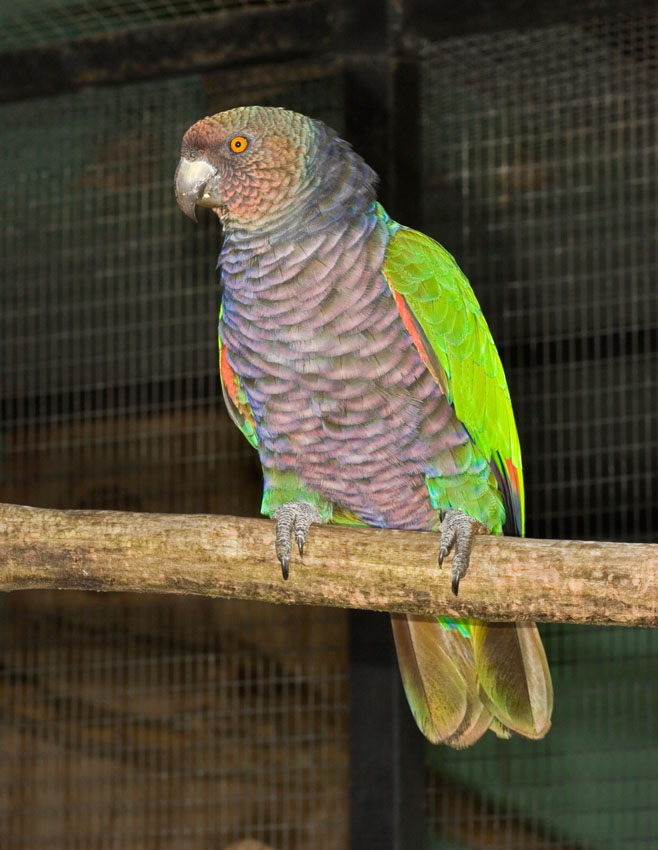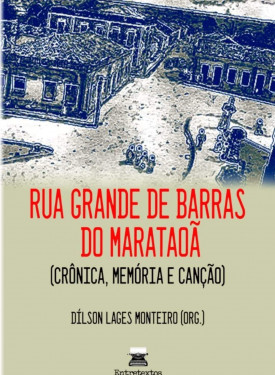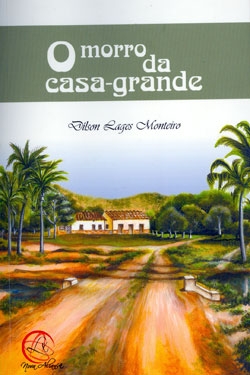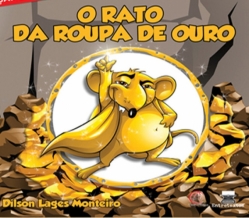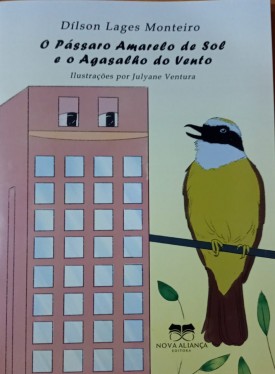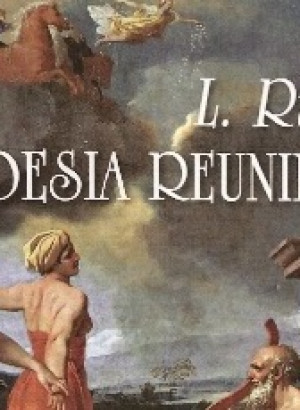Animais na heráldica (III)
 Por Flávio Bittencourt Em: 25/11/2009, às 10H42
Por Flávio Bittencourt Em: 25/11/2009, às 10H42
Animais na heráldica (III)
No brasão oficial de Dominica não faltam dois papagaios, uma canoa do Caribe (com vela), um coqueiro, uma bananeira e um leão, além do sapo, que se adiantou para não ficar de fora do emblema.
===
Dica de logo antes do réveillon:
LEIA O ÚLTIMO ARTIGO DESTA COLUNA, EM 2009,
"Retrospectiva: em agosto de 2009 morreu o inventor da guitarra elétrica":
http://www.portalentretextos.com.br/colunas/recontando-estorias-do-dominio-publico,236.html
SE TIVER TEMPO E INTERESSE, VEJA ARTIGO PUBLICADO PELO RESPONSÁVEL PELA COLUNA "Recontando estórias do domínio público", PUBLICADO NO ÚLTIMO DIA DO ANO (31.12.2009), NO JORNAL BRASILIENSE TRIBUNA DO BRASIL:
http://www.tribunadobrasil.com.br/site/index.php?p=noticias_ver&id=8473
FELIZ 2010!
===

Crianças muito apreciam os bonecos figurativos de aves
bicudas que gritam e repetem frases ditas pelos humanos.
Quando os inteligentes autores do brasão de Dominica colocaram
dois psitacídeos protegendo o escudo do emblema, ao invés de
estarem "infantilizando" um Símbolo Nacional - e na Bandeira
desse país a ave também está representada -, ao contrário,
estavam eles elevando um elemento da natureza da região -
o papagaio imperial - ao estatuto de lúdica porção de
Emblema Nacional, para alegria até de estrangeiros
que muito admiram o povo de Dominica e sua história,
sem que se desconsidere, mesmo, sua pré-história, como
um tempo "mítico" em que a Ilha era habitada por nobres
indígenas aruaques e caribes (ou caraíbas), os que lá
viveram antes de Cristóvão Colombo - navegador que
"descobriu" a ilha - e seus comandados terem chegado
em suas imponentes caravelas. Mas é a embarcação
local, "pequena", digna e à vela - conhecida em língua
inglesa como carib canoe -, a grande ubá que está figurada
nesse singular e comovente Brasão Nacional.
(O comentário é desta Coluna; a foto dos brinquedos-aves
está, na Web, em: avehttp://www.choiceaccessories.com/index.asp?Category=6&PageAction=VIEWCATS)
O ESCUDO DA COMUNIDADE DA (Commonwealth of) DOMINICA (NÃO CONFUNDIR COM REPÚBLICA DOMINICANA)
"(...) L’île [Dominica, Dominique] avait été initialement peuplée par des Indiens arawaks, puis par des Caraïbes. Le dimanche 3 novembre 1493, lors de son deuxième voyage aux Amériques, Christophe Colomb longe les rivages de l’île qu'il appelle ainsi Domingo - dimanche en espagnol -, d’où proviennent ses noms actuels : Dominique, en français, et Dominica, en anglais. Les Indiens caraïbes doivent leur vie aux reliefs escarpés de la Dominique, ses forêts denses et sauvages. Venus du nord du Venezuela, ils s'étaient installés sur l'île bien avant que Christophe Colomb ne la découvre. (...)". (http://fr.wikipedia.org/wiki/Dominique_(pays))
Ao atlântico povo de Dominica, país da maravilhosa ilha do Mar do Caribe
25.11.2009 - Aprendemos na leitura do verbete da Wikipédia relativo ao emblema de Dominica que "O brasão de armas de Dominica foi adotado a 21 de Julho de 1961. É constituído por um escudo suportado por dois papagaios-imperiais, encimado por um leão em posição defensiva. Os quadrantes do escudo apresentam uma canoa, uma bananeira, uma palmeira e um sapo das montanhas. Na base do escudo está o lema nacional: Après Bondie C'est La Ter (Primeiro, Deus, depois a Terra)". (http://pt.wikipedia.org/wiki/Bras%C3%A3o_de_armas_da_Dominica)
O interessante da descrição (em inglês) a seguir transcrita é que ela foi desenvolvida em duas partes, sendo a primeira uma descrição heráldica e a segunda uma descrição não-heráldica. Algo aqui será dito, futuramente, sobre essa sugestiva distinção. A descrição heráldica, naturalmente, tende a ser mais técnico-semiótica - a que leva em consideração regras de códigos estritos -, enquanto a descrição não-heráldica, salvo conclusão posterior em contrário, de estudos específicos que pretendo empreender brevemente, tem um pendor literário e cinematográfico mais acentuado (ainda que as semióticas da literatura e do cinema considerem, com particular admiração, as rupturas operadas relativamente às regras - antigamente - rígidas dos respectivos códigos estéticos e comunicacionais). [Não é ocioso lembrar que uma convivência de dois pagagaios com um leão é mais sugestiva do que seria a mera SUBSTITUIÇÃO de UM leão por UM papagaio que, evidentemente, passaria a "funcionar", no emblema, como banal "leão" falante...]. Ambito desses estudos: comunicação humana, ali onde a metafísica da arte é deixada para os filósofos da arte, sempre preocupados com as assim chamadas obras superiores. Aqui, se o produto cultural não for considerado um tanto "trivial", "inferior" e "compreensível", não interessa. Voltando às descrições a seguir reproduzidas, diga-se logo que ambas são relevantes no contexto de admirações estético-lúdicas e preocupações teórico-semóticas - no sentido de uma ampla semiótica da cultura... - do âmbito desta despretensiosa Coluna "Recontando...". Flávio Bittencourt ([email protected])
"Dominica's Coat of Arms

Heraldric Description
Quarterly Or and Azure a cross fillet counterchanged in the first quarter on a Rocky Mount Sable a Coconut Tree fructed proper in the second a Dominica Crapaud also proper in the third on Water Barry wavy in base a Carib canoe with sail set all likewise proper in the fourth quarter on a Rocky Mount also sable a Banana Tree fructed also proper and for the crest. On a Wreath Argent and Azure a Rocky Mount Sable thereon a Lion Passant guardant Or and for the Supporters. On either side of Sisserou Parrot (Amazona imperials) proper beaked and membered or together with this motto APRES BONDIE C’EST LA TER.
Non-Heraldric Description
The Coat of Arms of Dominica bears the inscription ‘ Apres Bondie C’est La Ter’, (after God the Earth), which emphasizes the importance of the soil in the island with its economy based on agriculture.
The design depicts a shield divided into four quarters of a cross, referring to the Island’s name, because of its discovery on a Sunday. In first quarter on the top left, you see the black volcanic soil of Dominica supporting a coconut tree, and in the fourth quarter on bottom right a fully developed banana stem bearing a mature bunch of fruits is shown. Our Crapaud, the second quarter, while in the third quarter, a canoe under sail glides on the Caribbean Sea. A wreath of silver and blue bears the crest, a golden lion standing upon a black rocky mount with the Sisserou parrot (Amazona imperialis) as supporters.

Heraldric Description
Quarterly Or and Azure a cross fillet counterchanged in the first quarter on a Rocky Mount Sable a Coconut Tree fructed proper in the second a Dominica Crapaud also proper in the third on Water Barry wavy in base a Carib canoe with sail set all likewise proper in the fourth quarter on a Rocky Mount also sable a Banana Tree fructed also proper and for the crest. On a Wreath Argent and Azure a Rocky Mount Sable thereon a Lion Passant guardant Or and for the Supporters. On either side of Sisserou Parrot (Amazona imperials) proper beaked and membered or together with this motto APRES BONDIE C’EST LA TER.
Non-Heraldric Description
The Coat of Arms of Dominica bears the inscription ‘ Apres Bondie C’est La Ter’, (after God the Earth), which emphasizes the importance of the soil in the island with its economy based on agriculture.
The design depicts a shield divided into four quarters of a cross, referring to the Island’s name, because of its discovery on a Sunday. In first quarter on the top left, you see the black volcanic soil of Dominica supporting a coconut tree, and in the fourth quarter on bottom right a fully developed banana stem bearing a mature bunch of fruits is shown. Our Crapaud, the second quarter, while in the third quarter, a canoe under sail glides on the Caribbean Sea. A wreath of silver and blue bears the crest, a golden lion standing upon a black rocky mount with the Sisserou parrot (Amazona imperialis) as supporters.
(http://www.dominica.gov.dm/cms/index.php?q=node/81)
A seguir estão, em fotos, elementos que foram heraldizados no brasão de armas de Dominica.

Côcos no alto do vistoso COQUEIRO: cachos de bananas e até côcos - que, no Brasil, são em várias regiões chamados de "côcos da Bahia" - aparecem no fabuloso Emblema Nacional de Dominica
(http://www.minustidejewelry.com/Minus_Tide_home.html)

A generosa BANANEIRA e as bananas não foram esquecidas pelos autores do brasão de Dominica
(http://ilheu.bloguepessoal.com/67512/Frutos-dailha-21-bananas/)

O velho LEÃO é figurinha fácil nesta Coluna "Recontando estórias do domínio público", do portal Entre-textos. Veja, por exemplo, sobre leões emblemáticos, o que consta em http://www.portalentretextos.com.br/colunas/recontando-estorias-do-dominio-publico/o-verdadeiro-leao-da-metro,236,2641.html. Comparece o assim chamado rei dos animais no brasão onde - inteligentemente - não se esconde que se trata de Nação que produz bananas. Produzir "côcos de Dominica" (lá eles não se chamam, é claro, "côcos da Bahia") e bananas é um orgulho nacional!
(http://www.gforum.tv/board/1075/220386/mamiferos-da-letra-l.html)

O formidável, contudo ameaçado de extinção, SAPO característico daquela região ("Mountain chicken frogs breeding in captivity at Durrell. Credit Durrell".
"(...) The mountain chicken frog, Leptodactylus fallax, is one of the largest frogs in the world, but it has also become one of the most threatened. Thought to have once occurred on seven Caribbean islands, it is now restricted to Montserrat and Dominica. (...)", http://www.wildlifeextra.com/go/news/mountain-chicken-tadpole009.html#cr)
Por fim, dados interessantes sobre a Dominica (não confundir com República Dominicana).
"The Commonwealth of Dominica
 "Before God and all mankind, I pledge allegiance to the flag of the Commonwealth of Dominica and to the Sovereign Republic for which it stands; my love, my loyalty and skills, in the service of Dominica and my fellow Citizens. I promise to work diligently and help build a prosperous and peaceful Nation."
"Before God and all mankind, I pledge allegiance to the flag of the Commonwealth of Dominica and to the Sovereign Republic for which it stands; my love, my loyalty and skills, in the service of Dominica and my fellow Citizens. I promise to work diligently and help build a prosperous and peaceful Nation."
| Please take some time to peruse OUR CONSTITUTION |
 They call her the NATURE ISLAND of the Caribbean. Why? Because her beauty has remained untouched, unspoiled, as verdant as when the hand of God created her."Isle of beauty, Isle of splendour..." so chants her National Anthem. Yes! This is Kairi, Waitikubuli, Dominica, the Commonwealth of Dominica. Call her whatever you wish, she remains my beautiful Dominica. Photo by T & J Productions
They call her the NATURE ISLAND of the Caribbean. Why? Because her beauty has remained untouched, unspoiled, as verdant as when the hand of God created her."Isle of beauty, Isle of splendour..." so chants her National Anthem. Yes! This is Kairi, Waitikubuli, Dominica, the Commonwealth of Dominica. Call her whatever you wish, she remains my beautiful Dominica. Photo by T & J Productions
 Do you see the Commonwealth of DOMINICA in RED? Do you see the Commonwealth of DOMINICA in RED?Too often this beautiful gem of nature is mistaken for the Dominican Republic just north adjoining Haiti. Don't ever make this mistake! Tell your friends and relatives about the real location of our Nature Island. There is no comparison, you will agree, after you've taken this tour. Please read her History. |
 She lies in the middle of the eastern chain of islands which enclose the Caribbean Sea. (See map above). Ruggedly mountainous, a product of volcanic activity, Dominica boasts of a fresh water lake, a boiling lake, sulphur springs, cascading waterfalls, as many rivers as days in a year, flora and fauna unparalelled anywhere in the world, a proud and historic Reservation of Caribs, the original inhabitants of the Caribbean and a people, so warm, you will always remember them long after your visit. She lies in the middle of the eastern chain of islands which enclose the Caribbean Sea. (See map above). Ruggedly mountainous, a product of volcanic activity, Dominica boasts of a fresh water lake, a boiling lake, sulphur springs, cascading waterfalls, as many rivers as days in a year, flora and fauna unparalelled anywhere in the world, a proud and historic Reservation of Caribs, the original inhabitants of the Caribbean and a people, so warm, you will always remember them long after your visit. |
 Look above! Have you ever seen 'champagne' bubbles rising from the sea bed before? Look below at these breath-taking photos of Nature at her best! Turn where you may, you are bombarded by new and exotic music, culinary aromas and the easy movement of life. Your awareness sharpens, as if for brief moments time waits on you. Do not for one moment mistake this easy pace of life for the lackadaisical caricature that former colonial masters conveniently used to justify their economic extortion of her resources. No! No! It is our attunement to the rhythm of nature, an art which the developed world now seek to emulate. You, too, will slow down to this rejuvenating tempo when you visit. The air is always fresh and clean and your lungs tingle with satisfaction. Do you wonder why Dominica had boasted the world's oldest living human being, now deceased? See also "Pampo, Pending Record Holder". Look above! Have you ever seen 'champagne' bubbles rising from the sea bed before? Look below at these breath-taking photos of Nature at her best! Turn where you may, you are bombarded by new and exotic music, culinary aromas and the easy movement of life. Your awareness sharpens, as if for brief moments time waits on you. Do not for one moment mistake this easy pace of life for the lackadaisical caricature that former colonial masters conveniently used to justify their economic extortion of her resources. No! No! It is our attunement to the rhythm of nature, an art which the developed world now seek to emulate. You, too, will slow down to this rejuvenating tempo when you visit. The air is always fresh and clean and your lungs tingle with satisfaction. Do you wonder why Dominica had boasted the world's oldest living human being, now deceased? See also "Pampo, Pending Record Holder". |
 How can one not stop in his tracks to admire with fearful awe the steaming cauldron of the Boiling Lake above? Or become exhilarated by the hissing, multicoloured, red-hot lava of the minor eruption on the left? Several safaris will take you through the rain forests, through her many national parks which preserve and protect what God has given us which, through Eco-Tourism, all can enjoy. Dominica boasts of Morne Trois Pitons National Park, the only natural World Heritage Site in the Eastern Caribbean. One visitor declared, "If there ever was a Garden of Eden on earth, this is it!" How can one not stop in his tracks to admire with fearful awe the steaming cauldron of the Boiling Lake above? Or become exhilarated by the hissing, multicoloured, red-hot lava of the minor eruption on the left? Several safaris will take you through the rain forests, through her many national parks which preserve and protect what God has given us which, through Eco-Tourism, all can enjoy. Dominica boasts of Morne Trois Pitons National Park, the only natural World Heritage Site in the Eastern Caribbean. One visitor declared, "If there ever was a Garden of Eden on earth, this is it!" |
Present National Flag The central emblem presents the National Bird of Dominica, the Sisserou parrot, the stars represent the ten parishes. The yellow, black and white stripes forms a cross representing the Trinity of God. Yellow is for sunshine and bananas, white represents the clarity of our rivers and waterfalls, and black represents the richness of our soil and our African heritage. The central emblem presents the National Bird of Dominica, the Sisserou parrot, the stars represent the ten parishes. The yellow, black and white stripes forms a cross representing the Trinity of God. Yellow is for sunshine and bananas, white represents the clarity of our rivers and waterfalls, and black represents the richness of our soil and our African heritage. |
| Past National Flags | ||||
 Up to 1871 |
 1871 to 1940 |
 1940 to 1955 |
 1955 to 1965 |
 1965 to 1978 |
 1978 to 1981 |
 1981 to 1988 |
Coat of Arms The national crest comprise a shield with two guardian Sisserou Parrots bracing the shield atop of which is a lion rampant. The quadrants of the shield depict a canoe, a banana tree, a palm and a mountain frog (crapaud). The motto, 'Après Bondie C'est La Ter' translates (After God the Earth). The national crest comprise a shield with two guardian Sisserou Parrots bracing the shield atop of which is a lion rampant. The quadrants of the shield depict a canoe, a banana tree, a palm and a mountain frog (crapaud). The motto, 'Après Bondie C'est La Ter' translates (After God the Earth). |
National Bird SISSEROU is the national bird of Dominica, endemic to the island and the only place where it is found; a magnificent bird with beautiful green and purple plumage; large, compact, sturdy-looking, 46-51 cm long (18-20 in); scaly, purplish face, and purplish-black head; dark, sometimes grey, hooked bill; eyes red with orange-red eye-rings; neck deep purplish-blue, with back darkish green; wings mostly green, with red shoulder patch; underparts dominantly purple; tail red and green-tipped, with undertail purplish black; legs short and grey; feeds on young shoots, nuts, seeds and fruit; generally shy and secretive, but very noisy during mating season (March-August); found mainly between 600 and 1,300 metres elevation (2,000-4,200 ft), the Imperial, largest and most magnificent of Amazons, is on the world list of protected birds, and is protected by law in Dominica. (See More) SISSEROU is the national bird of Dominica, endemic to the island and the only place where it is found; a magnificent bird with beautiful green and purple plumage; large, compact, sturdy-looking, 46-51 cm long (18-20 in); scaly, purplish face, and purplish-black head; dark, sometimes grey, hooked bill; eyes red with orange-red eye-rings; neck deep purplish-blue, with back darkish green; wings mostly green, with red shoulder patch; underparts dominantly purple; tail red and green-tipped, with undertail purplish black; legs short and grey; feeds on young shoots, nuts, seeds and fruit; generally shy and secretive, but very noisy during mating season (March-August); found mainly between 600 and 1,300 metres elevation (2,000-4,200 ft), the Imperial, largest and most magnificent of Amazons, is on the world list of protected birds, and is protected by law in Dominica. (See More) |
National Dance - Quadrille Quadrille is a historic dance performed by four couples in a square formation, a precursor to traditional square dancing. It is also a style of music. A derivative found in the Francophone Lesser Antilles is known in the local Creole as kwadril. Quadrille is a historic dance performed by four couples in a square formation, a precursor to traditional square dancing. It is also a style of music. A derivative found in the Francophone Lesser Antilles is known in the local Creole as kwadril. |
|
Isle to all so sweet and fair, All must surely gaze in wonder At thy gifts so rich and rare. Rivers, valleys, hills and mountains, All these gifts we do extol. Healthy land, so like all fountains, Giving cheer that warms the soul.
|
With a clime benign and bright, Pastures green and flowers of beauty Filling all with pure delight, And a people strong and healthy, Full of godly, rev'rent fear. May we ever seek to praise Thee For these gifts so rich and rare.
|
Of this gem beyond compare. Strive for honour, sons and daughters, Do the right, be firm, be fair. Toil with hearts and hands and voices. We must prosper! Sound the call, In which ev'ryone rejoices, "All for Each and Each for All."
|
Music by LAMUEL MCPHERSON CHRISTIAN (1913-2000) |
| The capital City of Roseau |

For more detailed photos please visit and enjoy Niko's Roseau Photo Gallery
|
These few graphical exposures were copied, thankfully, from various web sites on Dominica. Here are some pivotal links to start you on your exotic journey. Enjoy! |
| I hope you've enjoyed what you saw and it was enough to tempt you to visit us in person. And now, as the sun sets in the west I bid you adieu, not goodbye. For I hope to see you again sometime! |
 |
(http://www.da-academy.org/dominica.html)
O PAPAGAIO IMPERIAL aparece não apenas no Brasão Civil de Armas de Dominica, - onde surge "dobrado" -, mas também, solitário e imponente, no centro da Bandeira Nacional daquele muito especial país do Mar do Caribe.
(http://www.kingsnake.com/westindian/metazoa16.html)
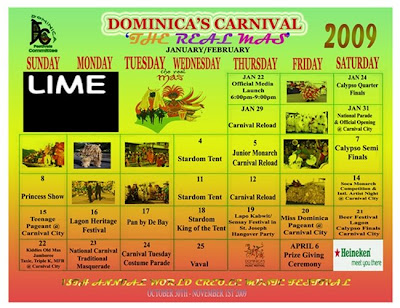
Cidade de Roseau, Dominica, Mar do Caribe: calendário do Carnaval-2009
(http://maureen61.blogspot.com/2009/02/dominica-2009-carnival-calendar.html)

CARNAVAL EM DOMINICA: em transatlânticos lotados, chegam os turistas em Roseau, a Capital
(http://johnhealdsblog.com/2009/02/04/do-you-know-what-it-means-to-miss-new-orleans-2/)
"Carnival Creole Costume"
Esplêndidas cores, formas e dançarinas no carnaval de Dominica (http://www.island-images.dominica-weekly.com/index.php?s=costume)

A BANDEIRA NACIONAL DE DOMINICA, na versão de cores vibrantes!
(http://www.unep.org/infoterra/nfpfacts/dominic.htm)


